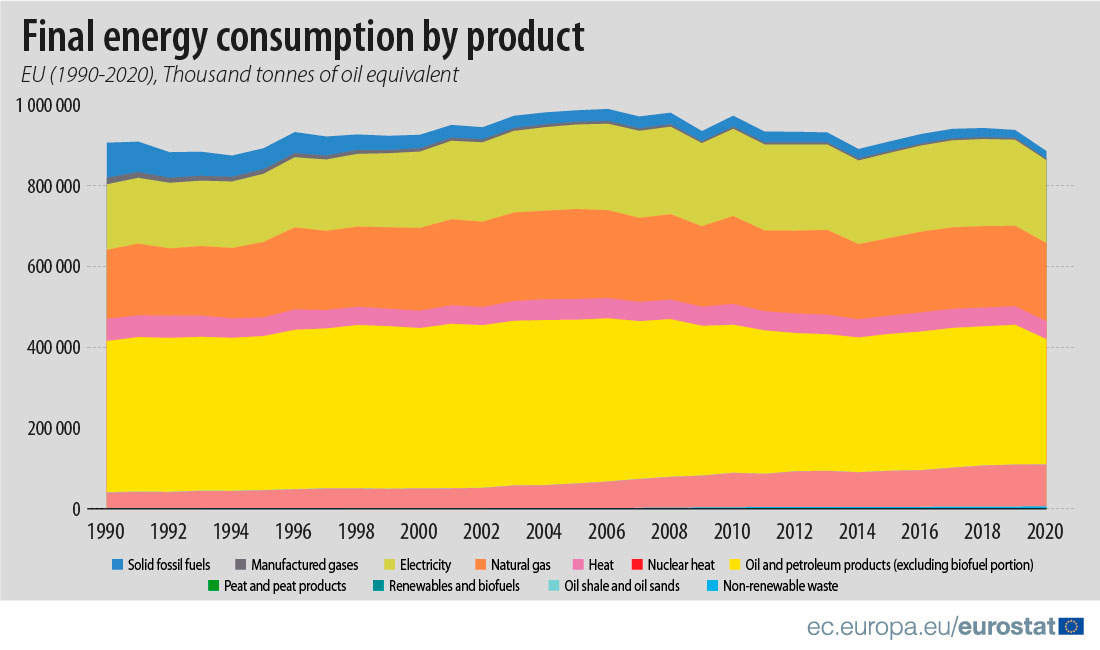In 2020, solid fossil fuels (coal) continued the downward trend of previous years and clocked another 18.4% fall, decreasing for the fifth consecutive year. Compared with 2015, it has dropped by 40%. Their share in the supply mix is now barely above 10%, while in 1990, it was 25.7%.
This information comes from data released by Eurostat recently.
Oil and petroleum products (excluding blended biofuel portion) also declined by 12.6% in 2020, reaching the lowest levels since 1990. Natural gas saw the same tendency, but on a lesser scale, decreasing by 2.4%. Nuclear fell by 10.7% and also reached the lowest levels since 1990.
Renewable energies and biofuels continue their long-term upward trend. After surpassing solid fossil fuels and nuclear in the previous decade, the next milestone towards a more sustainable and carbon-free economy would be to exceed natural gas.
In terms of consumption, the impact of COVID-19-related restrictions in 2020 was more substantial on the use of petroleum products (-10.3%) than on natural gas (-2.6%) and electricity (-3.8%). Mobility restrictions related to the pandemic affected some petroleum products more than other fuels. Kerosene-type jet fuel plummeted (-48.1%), while motor gasoline (-13.9%) saw a smaller decrease.










